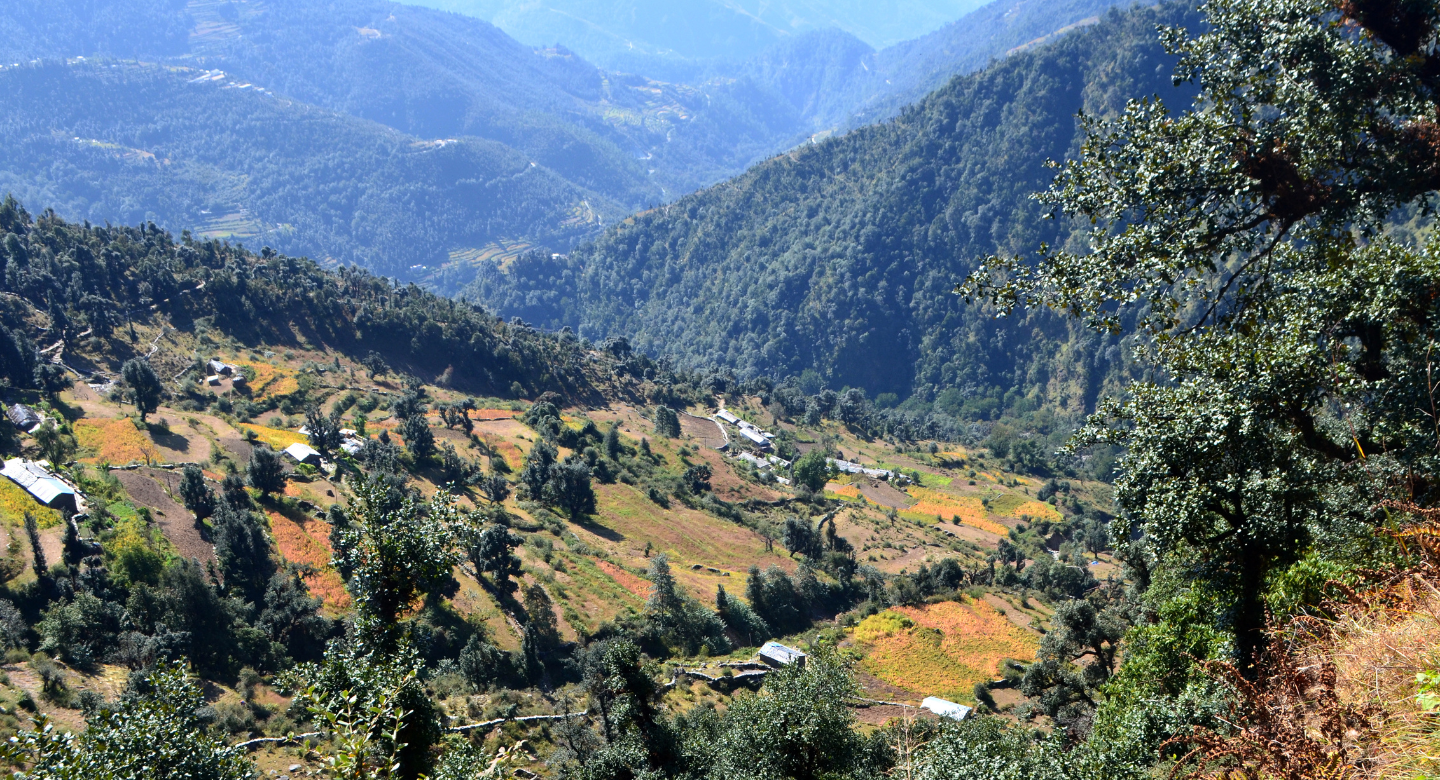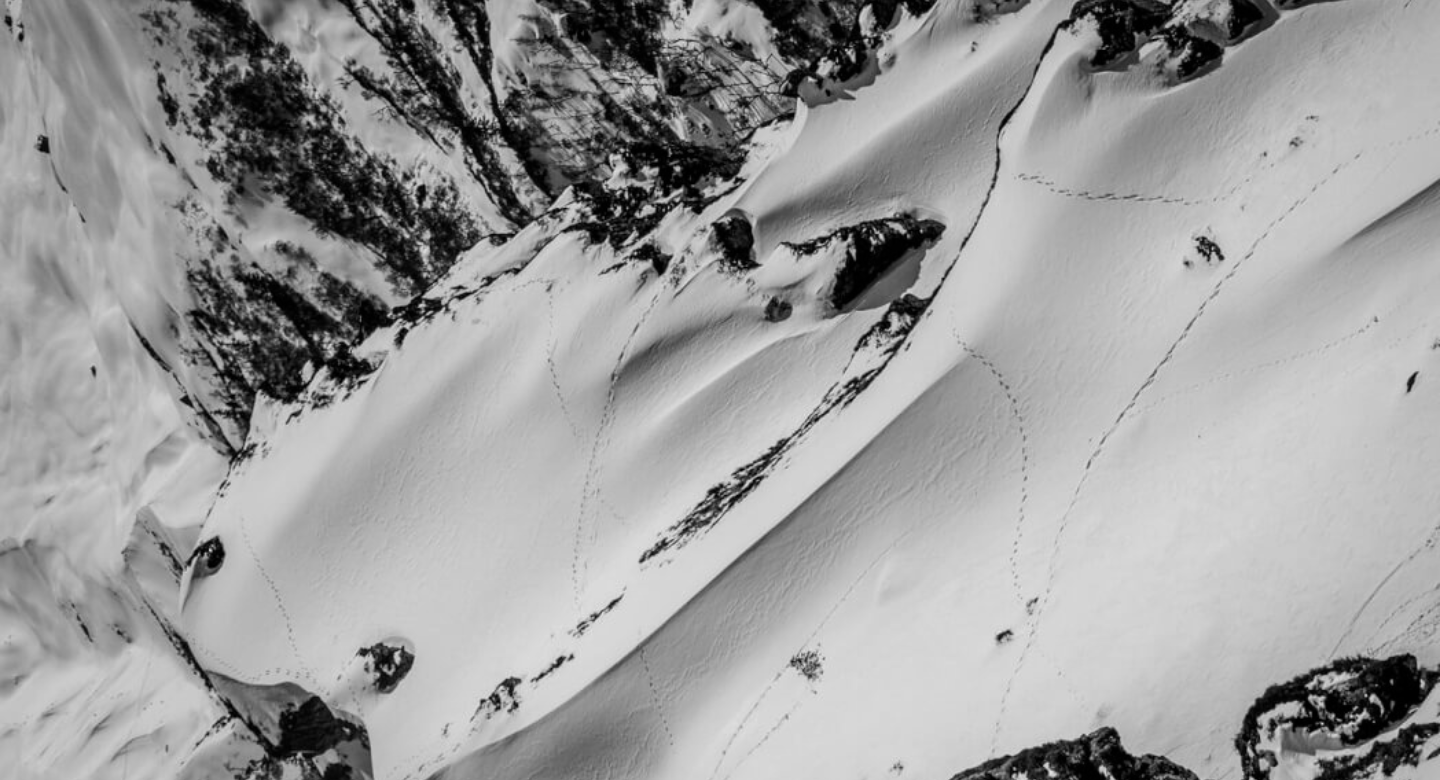
Brahmatal Trek
6 Days
22 Km
12,250 Ft
12-60
Easy - Moderate
The Brahmatal Trek is a stunning winter trek located in the Garhwal Himalayas, offering trekkers a beautiful blend of snow-covered landscapes, alpine lakes, and panoramic views of some of the highest peaks in the Indian Himalayas. The trek begins from the charming village of Lohajung and takes you through dense oak and rhododendron forests, along with open meadows, before reaching the high-altitude Brahmatal Lake, which holds spiritual significance. With its breathtaking views of peaks like Trishul, Nanda Ghunti, and Maiktoli, the Brahmatal trek is a favorite for those seeking a serene winter adventure.
Why this Trek?
- Mesmerizing Views: The trek offers awe-inspiring views of Himalayan peaks such as Trishul, Nanda Ghunti, and Maiktoli, especially from the Brahmatal summit.
- Winter Wonderland: The Brahmatal trek is one of the best winter treks in India, offering an enchanting experience with snow-covered trails and landscapes from December to March.
- Brahmatal Lake: The high-altitude Brahmatal Lake, surrounded by snow-clad mountains, holds significant spiritual importance and adds a mystical element to the trek.
- Tranquil Experience: The trek offers an opportunity to escape the crowds, walking through remote villages, peaceful forests, and serene meadows.
- Ideal for Beginners: With a moderate difficulty level, it’s perfect for beginner trekkers looking to experience snow trekking without an overwhelming challenge.
Included/Excluded
Select Dates
{{type.name}}
{{type.display_price}} per person
Guests
Extra prices:
- {{total_price_html}}
- {{pay_now_price_html}}
Guest in maximum
BOOK NOW Book NowItinerary for
Brahmatal Trek






Complete Trek Information
The best time to visit the Brahmatal Trek is during the winter months (December to March), when the trek is covered in snow, providing a true winter trekking experience. However, the pre-monsoon months (April to June) are also great for those who want to experience clear skies, lush meadows, and mild temperatures.
-
Winter (December to March): Ideal for snow trekking, with snow-covered trails and a magical landscape. The weather can be cold, with temperatures dropping to sub-zero levels, but the snow-covered scenery is worth it.
-
Pre-Monsoon (April to June): The weather is milder, making it easier to trek, with blooming rhododendrons and oak forests. The views of the Himalayas are clearer, and temperatures are more comfortable for trekking.
-
Monsoon (July to September): Not recommended due to heavy rainfall, which can make the trails slippery and difficult to trek.
-
Post-Monsoon (October-November): These months are also good, with clear skies, moderate temperatures, and an opportunity to enjoy the landscape before it gets too cold.
By Flight
The nearest airport to Rishikesh is Jolly Grant Airport in Dehradun, located about 20 kilometers away. This airport is well-connected to major cities like Delhi, Mumbai, and Bangalore through regular flights. Upon arrival at the airport, you can take a taxi, which takes approximately 45 minutes to reach Rishikesh. Alternatively, local buses might be available but are less frequent.
By Train
Rishikesh has its own railway station, Rishikesh Railway Station, which is conveniently located in the city. While this station handles limited trains, the nearby Haridwar Junction, just 25 kilometers away, offers excellent connectivity to major cities like Delhi, Kolkata, and Mumbai. From Haridwar, you can hire a taxi or take a local bus to Rishikesh, which takes around 30–45 minutes. Trains like the Yoga Express and Dehradun Express are popular choices for travelers.
By Bus
Rishikesh is well-connected by road, and buses are a convenient option. From Delhi, which is about 240 kilometers away, both private and state-run Volvo buses operate from Kashmiri Gate ISBT. The journey takes approximately 6–7 hours, depending on traffic conditions. Additionally, regular buses from nearby cities like Dehradun and Haridwar make reaching Rishikesh easy and affordable.
Pack smart, trek safe!
Ensure you're prepared for every adventure with this essential checklist of gear and supplies. Whether you're a beginner or a seasoned trekker, the right equipment makes all the difference. Download checklist's pdf here
Basic Gear
| Backpack with Rain Cover | (40 - 50 ltr) Comfortable Shoulder Straps |
| Day pack with Rain Cover | 20 - 30 ltr (If off-load opted) |
| Walking stick | Advisable (At least one) |
| Water Bottle / Hydration pack | 2 Bottles(1 liter each), Hydration Pack 1 (Pack) + Bottle |
| Small size tiffin/lunch box | 1 Nos |
| Snacks | Energy bars, dry fruits, electral/ors |
| Personal Medical Kit | Consult your doctor |
Clothing
| T-Shirt (Synthetic quick dry) | 1 Full & 1 Half sleeves |
| Fleece T-shirt | 1 Nos |
| Wind stopper / Fleece jacket | 1 Nos |
| Windproof Jacket | 1 Nos |
| Down feather / Hollow jacket | 1 Nos |
| Thermal inner (Upper and Lower) | 1 Nos |
| Trek Pant (Synthetic quick dry) | 1 Nos |
| Wind stopper / Fleece Pant | Not required |
| Waterproof gloves | Not required |
| Fleece / woollen gloves | 1 Pair |
| Poncho / waterproof Jacket and pant | 1 Nos |
Head Gears
| Head torch | 1 Nos. (Avoid Hand torch) |
| Sun cap | 1 Nos. (One that covers the neck as well) |
| Woolen cap | 1 Nos. |
| Balaclava | Not required |
| Buff / Neck-gaiters | 1 Nos |
| Sunglasses | UV with dark side cover, People who wear spectacles - (A)- Use contact lenses | (B)- Photo chromatic glasses |
Foot Gears
| Trekking shoes | 1 Pair (Waterproof, high ankle with good grip) |
| Floaters / flip-flops | 1 Pair |
| Cotton socks | 6 pairs |
| Woollen socks | 1 pairs |
| Gaiters | 1 Pair (TTH provides when required) |
| Micro spikes | 1 Pair (TTH provides when required) |
Personal Utilities
| Sunscreen cream | 1 Nos |
| Moisturiser | 1 Nos |
| Chap-stick / Lip balm | 1 Nos |
| Toothbrush and toothpaste | 1 Nos |
| Toilet paper & Wipes | 1 Nos |
| Soap / hand sanitizers | 1 Nos |
| Antibacterial powder | 1 Nos |
| Quick dry towel | 1 Nos |
At Scoutripper, we understand that plans can change. You can reschedule your booking up to 24 hours before your experience begins. Changes are subject to availability and any applicable price adjustments. Rest easy knowing your adventure is flexible!
At Scoutripper, we value flexibility but also adhere to clear cancellation guidelines:
- Full Refund: Cancel at least 6 full days before the experience starts.
- 50% Refund: Cancel between 2 and 6 full days before the start time.
- No Refund: Cancellations made less than 2 full days before the experience start time will not be refunded.
Additionally:
- Changes are not accepted less than 2 full days before the experience begins.
- Cut-off times are based on the local time of the experience.
- Some experiences require a minimum number of participants. If the minimum isn’t met, you’ll receive a full refund or the option to reschedule.
Enjoy peace of mind with our clear and transparent policies!
ATM Availability: The last ATM is available in Rishikesh, where you can withdraw cash before heading to the base camp. Ensure to withdraw enough cash for the trek and any personal expenses.
Mobile Connectivity: Mobile signals are available at Lohajung, the basecamp, for most networks. However, as you ascend into the mountains, mobile connectivity becomes intermittent, and phone signals will be limited. Finish any important calls before the trek and inform your family members about limited connectivity.
Electricity: The last charging point is at the base camp in Lohajung. Be prepared for possible power cuts in the area. It's advisable to carry a portable power bank to ensure you can charge your devices during the trek.
Cash: Carry approximately Rs 4-5k in cash for transport to the base camp, rental gear deposit, and personal expenses along the way.
Weather: Expect cold conditions during the trek, with temperatures dropping to -5°C to -10°C during the night. Be prepared with appropriate winter gear to stay warm.
FAQs about
Brahmatal Trek
The Brahmatal Trek is considered moderate. It is suitable for beginners with some fitness level and trekkers who have some experience in trekking in high-altitude conditions.
The highest point of the trek is 12,250 feet (3,740 meters) at Brahmatal Top.
The trek covers a total distance of approximately 35-40 km over 6 days.
Prior trekking experience is not mandatory but having some fitness and stamina is recommended. Beginners with good physical fitness can also complete the trek.
The winter months (December to March) are best for snow trekking when the entire landscape is covered with snow.
Accommodation includes campsites along the trekking route and guesthouses at the start and end of the trek.
Temperatures can range from 0°C to -10°C at higher altitudes during the winter months, while daytime temperatures may be around 5°C to 10°C at lower altitudes.
No, all meals are provided on the trek. You will be served nutritious vegetarian meals throughout the journey.
Yes, permits are required to trek in the region, and they are typically arranged by the trekking organizers.
While solo trekking is possible, it is recommended to go with an experienced group or trekking agency for safety and logistics, especially in remote areas.








